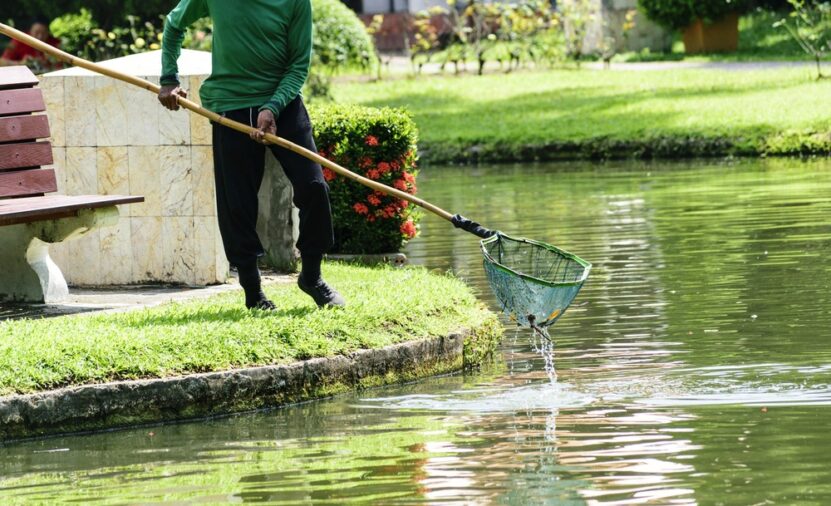Green water is the bane of every backyard water feature. It sneaks up like an uninvited guest, turning a clear paradise into a murky mess.
Algae love warm, nutrient-rich environments, but that doesn’t mean they get to take over. Keeping water clean is easier than most think.
Key Points:
- Algae thrive on sunlight and excess nutrients.
- Regular cleaning prevents major issues.
- A proper filtration system is essential.
- Plants help keep water balanced.
- Fish can contribute to water clarity when stocked correctly.
- Too much food fuels algae growth.
- UV clarifiers eliminate floating algae efficiently.
- Rainwater introduces unwanted nutrients.
- Over-filtering can disrupt the ecosystem.
- Shade reduces algae blooms.
Call a Pond Specialist for Expert Help
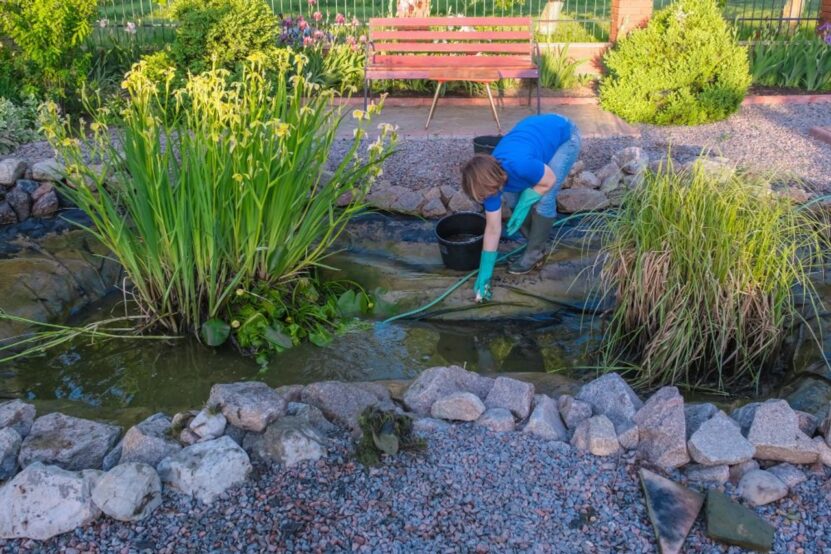
Anyone struggling with persistent algae issues might need professional assistance. A pond specialist can assess the situation and provide solutions tailored to specific water features.
Welcome to That Pond Guy, a trusted expert for cleaning, general upkeep, and custom builds in Kent and London. Whether it’s a small garden feature or a large koi habitat, expert solutions ensure everything remains clear, healthy, and thriving.
Reduce Nutrients Before Algae Takes Over
Algae need food to survive. Excess nutrients come from fish waste, uneaten food, and organic debris. Controlling these sources keeps things balanced.
Regular skimming and debris removal prevent excess nutrients from settling in the water. Fallen leaves, fish waste, and uneaten food all contribute to algae growth. Investing in a simple skimmer or net can make a significant difference. Another easy fix is controlling the amount of food given to fish. Overfeeding leads to decaying leftovers, which become an all-you-can-eat buffet for algae.
Filtration: The Heart of Water Clarity
A good filter keeps water moving and removes debris before it breaks down. The type of system needed depends on the size and inhabitants of the feature. Without a proper filtration setup, waste accumulates, creating an environment where algae thrive.
Types of Filtration Systems:
- Mechanical Filters: Trap solid waste, preventing buildup.
- Biological Filters: House beneficial bacteria that break down toxins.
- UV Clarifiers: Destroy floating algae, keeping water clear.
- Skimmers: Capture debris before it sinks.
Maintenance plays a big role here. Even the best filtration system won’t work if the filter is clogged. Cleaning or replacing filter media regularly ensures the system operates at full efficiency.
Plants: Nature’s Best Water Purifiers
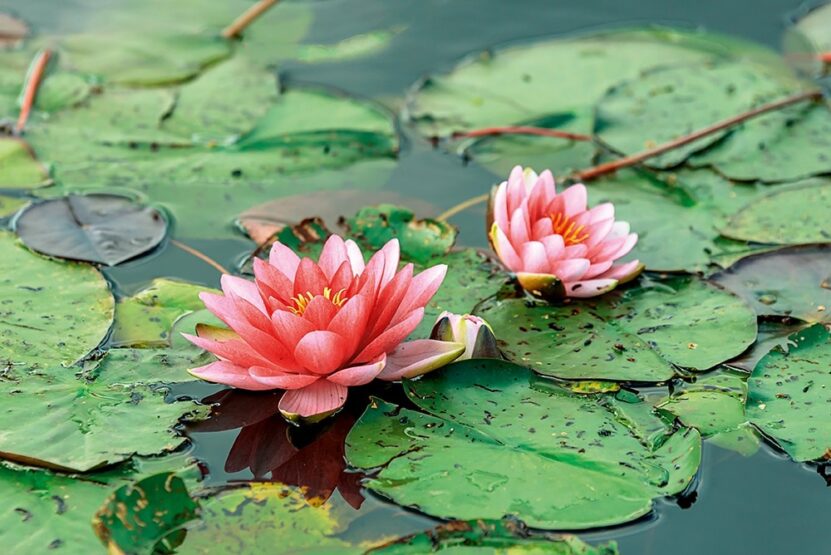
Aquatic plants compete with algae for nutrients, effectively starving out the green menace. They also provide oxygen, shade, and shelter for fish, contributing to a well-balanced aquatic ecosystem.
Adding a mix of floating, submerged, and marginal plants prevents excessive sunlight penetration while keeping oxygen levels stable. Water lilies, for instance, offer shade, reducing direct exposure to light. Submerged plants like anacharis absorb excess nutrients, keeping the water clear.
Shade Matters More Than You Think
Sunlight fuels algae growth. Reducing direct exposure helps prevent blooms.
- Position new water features in partial shade.
- Use floating plants to create natural coverage.
- Install shade sails or pergolas for artificial coverage.
Creating shade is one of the most effective long-term solutions for maintaining water clarity. Less light means fewer opportunities for algae to take over.
Stop Overfeeding Fish
Excess food creates waste, leading to nutrient buildup. Fish don’t need as much as many think. Feed only what they can consume in a couple of minutes.
- Stick to a regular feeding schedule.
- Use high-quality food with minimal fillers.
- Remove uneaten food promptly.
A good rule is to feed small amounts and observe how quickly fish eat. If food lingers on the surface for more than five minutes, it’s too much. Reducing waste helps maintain balanced water quality.
Rainwater Can Be an Issue
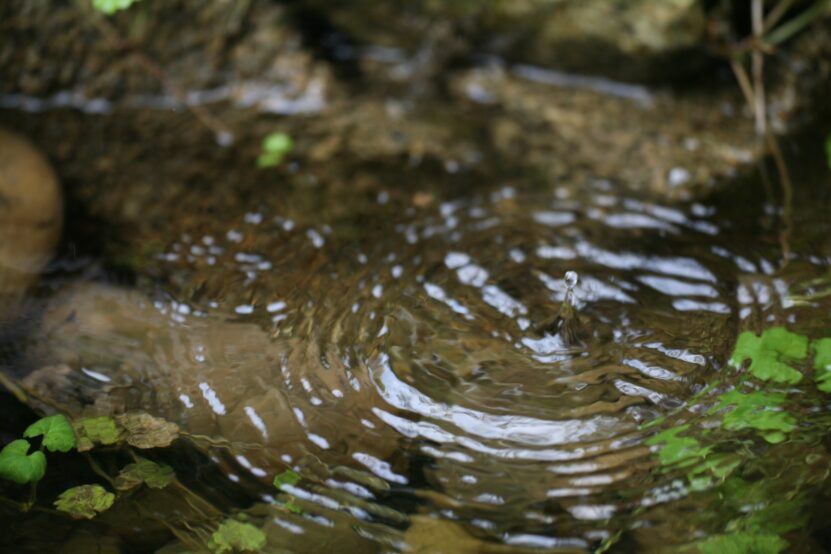
It seems harmless, but rain carries pollutants, disrupting water balance. It can introduce nutrients that fuel algae growth.
- Redirect runoff away from the area.
- Use a rain barrel to collect water before it enters.
- Test water quality after heavy rainfall.
Stormwater runoff is loaded with contaminants like fertilizers, dirt, and even airborne pollutants. Unchecked, it can quickly change water conditions, leading to green water problems.
Keep Water Moving
Stagnant water creates an ideal environment for algae. Adding movement prevents buildup and improves oxygen levels. Circulation also distributes beneficial bacteria evenly throughout the feature.
- Install a fountain or waterfall.
- Use an aerator for deeper water.
- Ensure the pump circulates water effectively.
Even a simple bubbler or air stone helps prevent stagnation. Moving water disrupts algae’s ability to form dense blooms, keeping the environment healthier.
The Role of UV Clarifiers
A UV clarifier eliminates floating algae before it spreads. Water passes through UV light, neutralizing microscopic algae cells.
- Choose the right wattage for the water volume.
- Clean the quartz sleeve regularly for maximum efficiency.
- Replace bulbs annually to maintain effectiveness.
UV clarifiers are highly effective but work best when combined with other methods like proper filtration and nutrient control.
Beneficial Bacteria: The Unsung Heroes
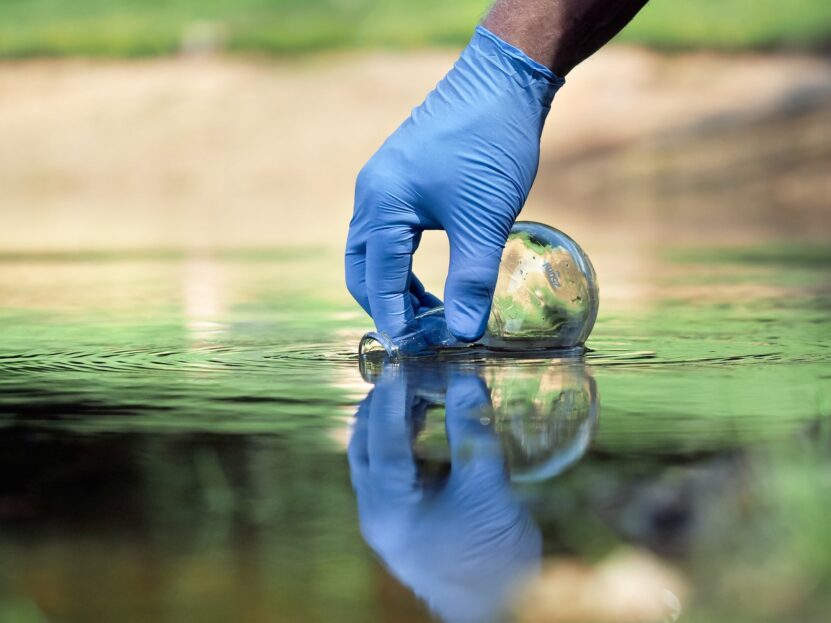
Not all bacteria are bad. Beneficial bacteria play a huge role in breaking down organic waste. They consume excess nutrients, reducing the chances of algae blooms.
- Introduce beneficial bacteria treatments regularly.
- Avoid harsh chemicals that kill good bacteria.
- Combine bacteria treatments with aeration for better results.
Bacteria act as natural cleaners, maintaining a balanced ecosystem without the need for aggressive chemical treatments.
Seasonal Maintenance: Preparing for Changes
Different seasons bring different challenges. Regular upkeep ensures a healthy environment year-round.
Spring and Summer:
- Increase filtration and aeration as temperatures rise.
- Monitor fish behavior and adjust feeding.
- Control plant growth to prevent overgrowth.
Fall and Winter:
- Remove excess leaves to avoid decay.
- Reduce feeding as fish metabolism slows.
- Install a pond heater in colder climates to prevent freezing.
Adapting maintenance routines based on seasonal changes keeps water quality stable regardless of weather conditions.
Conclusion
Clear water requires consistency. Small adjustments lead to significant improvements over time. Reducing nutrients, using proper filtration, adding plants, and controlling sunlight all contribute to a balanced environment. Regular maintenance prevents green water before it becomes a problem. With the right approach, any backyard water feature can stay pristine without endless upkeep.

